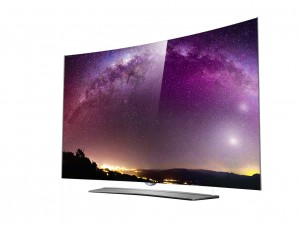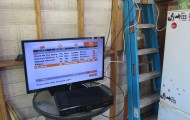Article
Time for Pay TV industry to get serious about Wi-Fi | VideoNet
My Comments
Previously I have raised the idea of having integrated Wi-Fi access point functionality in consumer electronics devices as a way to provide infill coverage for your wireless network. This is due to an increasing number of network-capable consumer-electronics devices like printers, set-top boxes, smart TVs and the like having network functionality in the form of both an Ethernet socket and integrated Wi-Fi wireless networking.
Some of these devices actually repurpose the Wi-Fi network functionality as an access point during their setup routine so you can supply your home network’s Wi-Fi credentials from a smartphone or tablet for subsequent wireless-network operation. But I was drawing attention to situations like a Wi-Fi-capable smart TV installed in the secondary lounge down the back of the house where there isn’t the good Wi-FI coverage and this TV is connected to the home network via a HomePlug AV500 powerline segment, or a premium desktop printer with Wi-Fi and Ethernet used in the garage that serves as the home office and. again, is linked to the home network via a HomePlug AV2 powerline segment.
There was some attention in the TV-technology scene when AirTies put forward their Air 4920 802.11ac concurrent-dual-band wireless-network repeater which was considered capable of pushing out 4K UHDTV data streams reliably. It led to the device winning the Connected TV Award for the Best Consumer Device. This was due to it also supporting Wi-Fi Mesh functionality which uses a mesh setup in a Wi-FI network.
But TV Connect also showed interest in a 4K set-top box which also implemented the Wi-Fi Mesh technology for receiving the data but having an integrated wireless access point. It was also targeted with the point of view of a broadband provider who provides a multi-play service that includes pay-TV being able to troubleshoot and service the Wi-FI connectivity if the connection is below par.
Of course, wired backbones are used by pay-TV providers to link set-top boxes to the home network typically to provide IPTV services, download video-on-demand content or stream content from a DVR to another set-top device servicing the bedroom TV. Typically this is facilitated using a “no-new-wires” technology like HomePlug AV powerline or MoCA coaxial-cable which links back to the home network’s router. Why hasn’t the integrated access point functionality been investigated in these setups?
The concept can be easily implemented in to most of these devices using WPS-assisted “network-clone” functionality and automatic tuning for a simplified setup experience. As well, the ability to detect a wired-backbone connection can be used to determine whether to set up the integrated Wi-Fi functionality as a n access point, a standalone Wi-Fi network like a guest network or not run it at all.
At least those in the pay-TV scene are waking up to the idea that an access point which is part of Wi-Fi network infrastructure doesn’t have to be part of a dedicated network-infrastructure device. Instead it can be part of a device that makes use of the network.



